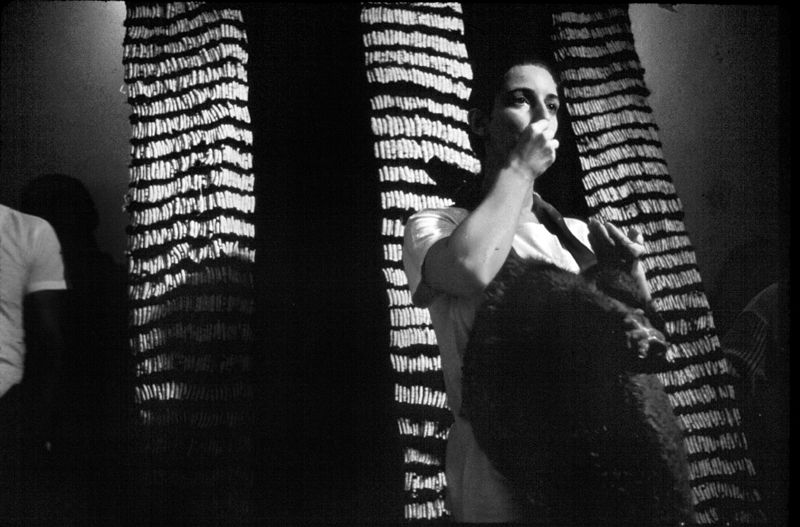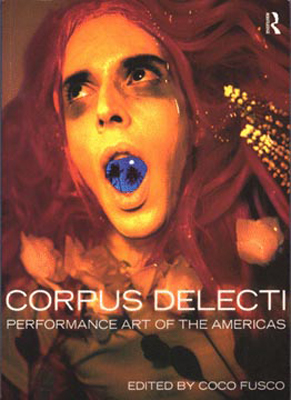Tania Bruguera
25.11.1999
From: Text by various authors. “Corpus Delecti -Performance Art of the Americas,” Ed. by Coco Fusco. Bruguera, Tania: El peso de la culpa. Ed.Routledge, England; United States, 1999. (illust.) pp.152 – 153.
ISBN 0-415-19453-9 (hbk)
ISBN 0-415-19454-7 (pbk)
The Burden of Guilt
by Tania Bruguera
There are events that are talked about in whispers; it’s not known if their purpose is to serve as testimony or if these stories are created because somebody needs to hear them.
That was the uncertainty I felt when someone told that the Indians in Cuba –at least a group of them- chose to rebel against their Spanish conquerors by eating dirt, and only dirt, so that their deaths would mark their resolve.
The practice of eating dirt is found primarily in Africa and Latin America, where it is used as a means to be close to the place where you are from as you travel to a new destination, to supplement necessary vitamins and proteins in the diet, to feed (physically and metaphorically) the fetus that is about to be born.
But the Cuban Indians, however, ate dirt as a weapon of resistance. They are from earth where they had been born, which is to say, they ate their ancestors, them-selves, their history, their memory, as if they were committing a cultural suicide.
“The Burden of Guilt” is the recovery and realignment of this story. The burden is really the slaughtered lamb that hangs from the neck like a shield, like an open wound that reveals what’s inside. The lamb is the weight that is carried as a consequence, as well as a symbolic attitude; the emotion, saltwater, which drops like tears and washes the earth, which is the guilt, before it is digested.

